ion
-
 Largest Number of Teams Selected From KAIST at 2007 LG Global Challenger Contest
Largest Number of Teams Selected From KAIST at 2007 LG Global Challenger Contest
The largest number of teams has been selected from KAIST at 2007 LG Global Challenger Contest
Despite of the record high competitive rate of 30/ 800, the largest number of teams has been selected from KAIST at 2007 LG Global Challenger Contest.
LG Global Challenger Contest is an exploration program where undergraduate and graduate students perform explorations on their own schedules and share the results with the public online.
Thus far, about 1,500 students from 410 teams have participated in the contest, and the contest is now regarded as the most representative overseas exploration program among university students, showing the average competitive rate of 1/ 20.
Exploration teams are selected by thorough examination and the members of selected teams have to complete the preliminary education program. The exploration teams will perform two-week overseas exploration on their own schedule during the summer vacation and their exploration activities will be relayed through the official web site of the contest by the designated team for online relay.
The exploration teams are obliged to submit the result reports, and the winners of the prize for good reports will be granted scholarship and employment privileges. The followings are the selected teams from KAIST:
Name: U-rekaTopic: U-Eco City, Advanced city where nature and human are well harmonizedMembers: A-Chim Chang (Department of Civil and Environmental Engineering)Hyuk-Il Cho (Department of Computer Sciences)Jung-Hyun Hong (Department of Industrial Engineering)Seung-Kyun Ryu (Department of Computer Sciences)
Name: TWIMTopic: The trend of unmanned ground vehicle development and its influence on unmanned societyMembers: Moon-Jung Byun (Department of Mechanical Engineering)Joon-Seok Park (Department of Electrical Engineering)Hye-Sun Hyun (Department of Electrical Engineering)Jong-Hoon Kim (Department of Electrical Engineering)
Team Impediment-free ODATopic: Future way of Korean ODAMembers: Joon-Youn Kim (Department of Industrial Engineering) Jae-Min Kim (Department of Industrial Engineering)Yoon-Jung Choi (Department of Industrial Engineering)Seul-Ki Lee (Department of Industrial Engineering)
2007.06.12 View 19766
Largest Number of Teams Selected From KAIST at 2007 LG Global Challenger Contest
Largest Number of Teams Selected From KAIST at 2007 LG Global Challenger Contest
The largest number of teams has been selected from KAIST at 2007 LG Global Challenger Contest
Despite of the record high competitive rate of 30/ 800, the largest number of teams has been selected from KAIST at 2007 LG Global Challenger Contest.
LG Global Challenger Contest is an exploration program where undergraduate and graduate students perform explorations on their own schedules and share the results with the public online.
Thus far, about 1,500 students from 410 teams have participated in the contest, and the contest is now regarded as the most representative overseas exploration program among university students, showing the average competitive rate of 1/ 20.
Exploration teams are selected by thorough examination and the members of selected teams have to complete the preliminary education program. The exploration teams will perform two-week overseas exploration on their own schedule during the summer vacation and their exploration activities will be relayed through the official web site of the contest by the designated team for online relay.
The exploration teams are obliged to submit the result reports, and the winners of the prize for good reports will be granted scholarship and employment privileges. The followings are the selected teams from KAIST:
Name: U-rekaTopic: U-Eco City, Advanced city where nature and human are well harmonizedMembers: A-Chim Chang (Department of Civil and Environmental Engineering)Hyuk-Il Cho (Department of Computer Sciences)Jung-Hyun Hong (Department of Industrial Engineering)Seung-Kyun Ryu (Department of Computer Sciences)
Name: TWIMTopic: The trend of unmanned ground vehicle development and its influence on unmanned societyMembers: Moon-Jung Byun (Department of Mechanical Engineering)Joon-Seok Park (Department of Electrical Engineering)Hye-Sun Hyun (Department of Electrical Engineering)Jong-Hoon Kim (Department of Electrical Engineering)
Team Impediment-free ODATopic: Future way of Korean ODAMembers: Joon-Youn Kim (Department of Industrial Engineering) Jae-Min Kim (Department of Industrial Engineering)Yoon-Jung Choi (Department of Industrial Engineering)Seul-Ki Lee (Department of Industrial Engineering)
2007.06.12 View 19766 -
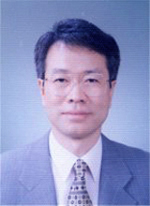 Prof. Whang Named Distinguished Database Profile by ACM SIGMOD
Professor Kyu-Young Whang of Computer Sciences has been named as Distinguished Database Profile (DDP) by Association for Computing Machinery Special Interest Group on Management Of Data (ACM SIGMOD).
DDP is a section of ACM SIGMOD Record that introduces researchers who have made significant global contributions in database field.
Thus far, about 20 researchers including Jeff Ullman and Jim Gray have been named as DDPs for their achievements such as establishment of new theories and technologies in database field, and Prof. Hwang is the first researcher named as DDP in the Asian-Pacific region.
Prof. Whang’s interview (directed by Marianne Winslett, Professor of UIUC, and Eric Bina, co-founder of Netscape) can be seen on http://www.sigmod.org/interviews and will be published at ACM SIGMOD Record in 2008.
2007.06.07 View 15511
Prof. Whang Named Distinguished Database Profile by ACM SIGMOD
Professor Kyu-Young Whang of Computer Sciences has been named as Distinguished Database Profile (DDP) by Association for Computing Machinery Special Interest Group on Management Of Data (ACM SIGMOD).
DDP is a section of ACM SIGMOD Record that introduces researchers who have made significant global contributions in database field.
Thus far, about 20 researchers including Jeff Ullman and Jim Gray have been named as DDPs for their achievements such as establishment of new theories and technologies in database field, and Prof. Hwang is the first researcher named as DDP in the Asian-Pacific region.
Prof. Whang’s interview (directed by Marianne Winslett, Professor of UIUC, and Eric Bina, co-founder of Netscape) can be seen on http://www.sigmod.org/interviews and will be published at ACM SIGMOD Record in 2008.
2007.06.07 View 15511 -
 KAIST Graduate School of Information Media Management Opens Blog for Web2.0 Lectures
KAIST Graduate School of Information Media Management Opens Blog for Web2.0 Lectures
- http://webtwo.kaist.ac.kr
The Graduate School of Media Information Management of KAIST (President Nam Pyo Suh) has opened a blog to share the contents of and hear various opinions on Web2.0 Lecture programs, established this semester.
Web2.0 Lecture refers to a program to deliver and educate a variety of ongoing projects and market responses, along with scholarly and theoretical accesses in a real-time basis. The lectures will be made by invited experts in the fields of web and mobile, which are yet to be established academically, but have created huge markets. Lectures on recent hot issues, such as the relevant technologies, trends, cultures, policies, and markets of Web2.0, will be firstly made.
The blog provides highlight moving pictures of the lectures and comments by professors and assistants, and is expected to deliver high quality contents to faculty and students interested in Web2.0. In addition, professors and assistants will share opinions online with lecture takers.
Professors in charge: Prof. Sunghee Kim, Prof. Dongwan Cha, Prof. Choonghee Ryu, Prof. Jaesun HanAssistants in charge: Jinwoo Park, Daejin Chung, Kyungeun Sung.
Contents:1. Trens & Internet: Market and Technology① Web2.0 overview (Sangoo Cho, Managing Director of KTH)② Collective Intelligence (PRAK, President of Mar.gar.in)③ UCC (Jangho Kim, Manger, KBSi)④ Blog (Jeongseok Noh, President of T&C)⑤ Copyright and CCL (Jongsoo Yoon, Judge of CCK)⑥ Long-tail (Hyogon Chang, President of Innomove)⑦ Search 2.0 (Byungkook Chun, President of Searching Engine Mast)
2. Web2.0 and Beyond① Web2.0 & Convergence (Kyungjeon Lee, Professor of Kyunghee University)② Web2.0 & business (Sooman Park, President of Double Track)③ Social Computing (Sangki Han, President of Opinity AP)④ Web2.0 & Media (Yongseok Hwang, Professor of Kunkook University)⑤ Attention Economy (Taweoo Ki, Taewoo’s log)⑥ Mobile Web2.0 (Jonghong Chun, Senior researcher of ETRI)
2007.05.14 View 14455
KAIST Graduate School of Information Media Management Opens Blog for Web2.0 Lectures
KAIST Graduate School of Information Media Management Opens Blog for Web2.0 Lectures
- http://webtwo.kaist.ac.kr
The Graduate School of Media Information Management of KAIST (President Nam Pyo Suh) has opened a blog to share the contents of and hear various opinions on Web2.0 Lecture programs, established this semester.
Web2.0 Lecture refers to a program to deliver and educate a variety of ongoing projects and market responses, along with scholarly and theoretical accesses in a real-time basis. The lectures will be made by invited experts in the fields of web and mobile, which are yet to be established academically, but have created huge markets. Lectures on recent hot issues, such as the relevant technologies, trends, cultures, policies, and markets of Web2.0, will be firstly made.
The blog provides highlight moving pictures of the lectures and comments by professors and assistants, and is expected to deliver high quality contents to faculty and students interested in Web2.0. In addition, professors and assistants will share opinions online with lecture takers.
Professors in charge: Prof. Sunghee Kim, Prof. Dongwan Cha, Prof. Choonghee Ryu, Prof. Jaesun HanAssistants in charge: Jinwoo Park, Daejin Chung, Kyungeun Sung.
Contents:1. Trens & Internet: Market and Technology① Web2.0 overview (Sangoo Cho, Managing Director of KTH)② Collective Intelligence (PRAK, President of Mar.gar.in)③ UCC (Jangho Kim, Manger, KBSi)④ Blog (Jeongseok Noh, President of T&C)⑤ Copyright and CCL (Jongsoo Yoon, Judge of CCK)⑥ Long-tail (Hyogon Chang, President of Innomove)⑦ Search 2.0 (Byungkook Chun, President of Searching Engine Mast)
2. Web2.0 and Beyond① Web2.0 & Convergence (Kyungjeon Lee, Professor of Kyunghee University)② Web2.0 & business (Sooman Park, President of Double Track)③ Social Computing (Sangki Han, President of Opinity AP)④ Web2.0 & Media (Yongseok Hwang, Professor of Kunkook University)⑤ Attention Economy (Taweoo Ki, Taewoo’s log)⑥ Mobile Web2.0 (Jonghong Chun, Senior researcher of ETRI)
2007.05.14 View 14455 -
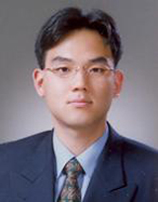 3rd KAIST Junghoon Cho Academic Award Ceremony
3rd KAIST Junghoon Cho Academic Award Ceremony
3rd KAIST Junghoon Cho Academic Award CeremonyAcademic award to Sehoon Kim, scholarship to Yougdae Kim, Daehyun Kim, Sunchul Park
KAIST (President Nam Pyo Suh) had the 3rd KAIST Junghoon Cho Academic Award ceremony at the conference room in the main administration building, Friday, May 11, at 2 pm with President Suh and the bereaved family attended.
Sehoon Kim, a doctoral researcher at the Agency for Defense Development (ADD) and KAIST graduate, was named as the 3rd recipient of the Junghoon Cho Academic Award in recognition of his achievement that establishes the design method of supersonic vacuum device. The scholarship was granted to Yongdae Kim (doctoral student of Aerospace Engineering, KAIST), Daehyun Kim (master student of Mechanical Engineering, Korea University), and Suncheol Park (senior of the Attached High School to the College of Education at kongju National University). The prize money is 20 million won, and the scholarship amounts to 3 million and 2 million won for university and high school students, respectively.
“Junghoon Cho Academic Award” is a meaningful award established by the donation of compensation money and personal properties, amounting to about 470 billion won, by Donggil Cho, father of the late Ph.D. Junghoon Cho who died at the explosion accident at the Wind Tunnel Laboratory in 2002, ▲ Ph.D. Sehonn Kim
2007.05.14 View 16239
3rd KAIST Junghoon Cho Academic Award Ceremony
3rd KAIST Junghoon Cho Academic Award Ceremony
3rd KAIST Junghoon Cho Academic Award CeremonyAcademic award to Sehoon Kim, scholarship to Yougdae Kim, Daehyun Kim, Sunchul Park
KAIST (President Nam Pyo Suh) had the 3rd KAIST Junghoon Cho Academic Award ceremony at the conference room in the main administration building, Friday, May 11, at 2 pm with President Suh and the bereaved family attended.
Sehoon Kim, a doctoral researcher at the Agency for Defense Development (ADD) and KAIST graduate, was named as the 3rd recipient of the Junghoon Cho Academic Award in recognition of his achievement that establishes the design method of supersonic vacuum device. The scholarship was granted to Yongdae Kim (doctoral student of Aerospace Engineering, KAIST), Daehyun Kim (master student of Mechanical Engineering, Korea University), and Suncheol Park (senior of the Attached High School to the College of Education at kongju National University). The prize money is 20 million won, and the scholarship amounts to 3 million and 2 million won for university and high school students, respectively.
“Junghoon Cho Academic Award” is a meaningful award established by the donation of compensation money and personal properties, amounting to about 470 billion won, by Donggil Cho, father of the late Ph.D. Junghoon Cho who died at the explosion accident at the Wind Tunnel Laboratory in 2002, ▲ Ph.D. Sehonn Kim
2007.05.14 View 16239 -
 KAIST to Publish Newsletter - 'KAISTAR'
KAIST to Publish Newsletter - ‘KAISTAR’
First edition on May 7To be issued every two weeks
KAIST (President Nam Pyo Suh) will be publishing the first edition of a newsletter targeting high school students on May 7. The newsletter is named ‘KAISTAR’, combination of ‘KAIST’ and ‘STAR’, meaning any KAIST students can be a world-class star in scientific circles. The newsletter will be issued every two weeks, beginning May 7.
KAISTAR is designed to convey a variety of happenings in KAIST to prospective students, thereby letting them know the excellences of KAIST and consequently attracting further talented students to the school. The newsletter will cover introduction of departments and student clubs, stories about graduates, and various events. KAIST is expecting the newsletter will play key roles in advertising the school to high school students. “The publication of KAISTAR is a brand-new challenge that informs the authentic aspects of KAIST to attract talented young boys and girls. I’m sure the authentic aspects of KAIST conveyed by KAISTAR will make prospective students and their parents ensure the excellences of KAIST,” said President Suh, giving his congratulatory remark to the publication. Free subscriptions are available and the newsletter can be seen on the official web site of the Admissions Team, http://admission.kaist.ac.kr.
2007.05.08 View 14493
KAIST to Publish Newsletter - 'KAISTAR'
KAIST to Publish Newsletter - ‘KAISTAR’
First edition on May 7To be issued every two weeks
KAIST (President Nam Pyo Suh) will be publishing the first edition of a newsletter targeting high school students on May 7. The newsletter is named ‘KAISTAR’, combination of ‘KAIST’ and ‘STAR’, meaning any KAIST students can be a world-class star in scientific circles. The newsletter will be issued every two weeks, beginning May 7.
KAISTAR is designed to convey a variety of happenings in KAIST to prospective students, thereby letting them know the excellences of KAIST and consequently attracting further talented students to the school. The newsletter will cover introduction of departments and student clubs, stories about graduates, and various events. KAIST is expecting the newsletter will play key roles in advertising the school to high school students. “The publication of KAISTAR is a brand-new challenge that informs the authentic aspects of KAIST to attract talented young boys and girls. I’m sure the authentic aspects of KAIST conveyed by KAISTAR will make prospective students and their parents ensure the excellences of KAIST,” said President Suh, giving his congratulatory remark to the publication. Free subscriptions are available and the newsletter can be seen on the official web site of the Admissions Team, http://admission.kaist.ac.kr.
2007.05.08 View 14493 -
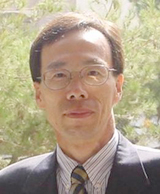 Professor Yang Named Recipient of Dupont Science & Technology Award
Professor Yang Named Recipient of Dupont Science & Technology Award
- Named as the recipient of Dupont Science & Technology Award of 2007- In recognition of his development of optical?bio-functional photonic crystal structures through Self-assembly of nanoparticles
Seung-Man Yang, a professor of Chemical and Biomolecular Engineering of KAIST (President Nam Pyo Suh) and the president of the National Creative Research Initiatives Center for Photon and Fluid Integrated Circuit by the Ministry of Science and Technology, has been named as the recipient of Dupont Science & Technology Award.
Dupont Korea, associate of Dupont, a world-class science firm, has established and conferred ‘Dupont Science & Technology Award’ since 2002 to promote basic sciences and industrial development of Korea. Dupont Science & Technology Awards are awarded to scientists of universities or state-run institutes who have made outstanding R&D achievements in the fields of Chemistry, Chemical Engineering, Material Science and Material Engineering within five years. Dupont Korea announced on May 2, 2007 that Professor Yang is the recipient of the award this year, following the strict examination by the Koran Academy of Science and Technology (KAST).
The reason for the award is Professor Yang’s development of prototype optical?bio-functional photonic crystal structures that can process a huge amount of data, resulting from a study that has discovered the principle of Self-assembly where multifunctional nanoparticles are manufactured and assembled for themselves.
Professor Yang’s recent research result about photon structures and nano patterns was published by Nature (February 2, 2006 edition); posted on Heart-Cut, the portal site of the American Chemistry Society (ACS), as highlight paper two times (November 4, 2002 and May 1, 2006); and introduced at Research/Researcher of MRS Bulletin by the U.S. Material Research Society (MRS) as main paper in December 2003. Professor Yang is very famous in Korea and abroad for the excellences of his research achievements and has made request seminars at Harvard University, University of Wisconsin, Caltech, University of California, etc. He is also invited speaker and session organizer of the MRS and the SPIE.
2007.05.08 View 21608
Professor Yang Named Recipient of Dupont Science & Technology Award
Professor Yang Named Recipient of Dupont Science & Technology Award
- Named as the recipient of Dupont Science & Technology Award of 2007- In recognition of his development of optical?bio-functional photonic crystal structures through Self-assembly of nanoparticles
Seung-Man Yang, a professor of Chemical and Biomolecular Engineering of KAIST (President Nam Pyo Suh) and the president of the National Creative Research Initiatives Center for Photon and Fluid Integrated Circuit by the Ministry of Science and Technology, has been named as the recipient of Dupont Science & Technology Award.
Dupont Korea, associate of Dupont, a world-class science firm, has established and conferred ‘Dupont Science & Technology Award’ since 2002 to promote basic sciences and industrial development of Korea. Dupont Science & Technology Awards are awarded to scientists of universities or state-run institutes who have made outstanding R&D achievements in the fields of Chemistry, Chemical Engineering, Material Science and Material Engineering within five years. Dupont Korea announced on May 2, 2007 that Professor Yang is the recipient of the award this year, following the strict examination by the Koran Academy of Science and Technology (KAST).
The reason for the award is Professor Yang’s development of prototype optical?bio-functional photonic crystal structures that can process a huge amount of data, resulting from a study that has discovered the principle of Self-assembly where multifunctional nanoparticles are manufactured and assembled for themselves.
Professor Yang’s recent research result about photon structures and nano patterns was published by Nature (February 2, 2006 edition); posted on Heart-Cut, the portal site of the American Chemistry Society (ACS), as highlight paper two times (November 4, 2002 and May 1, 2006); and introduced at Research/Researcher of MRS Bulletin by the U.S. Material Research Society (MRS) as main paper in December 2003. Professor Yang is very famous in Korea and abroad for the excellences of his research achievements and has made request seminars at Harvard University, University of Wisconsin, Caltech, University of California, etc. He is also invited speaker and session organizer of the MRS and the SPIE.
2007.05.08 View 21608 -
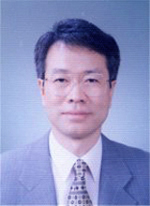 Prof. Hwang Inaugurated as 22nd President of KISS
Prof. Hwang Inaugurated as 22nd President of KISS
Kyu-Young Hwang, a professor of Computer Sciences, has been inaugurated as the 22nd president of the Korea Information Science Society (KISS). The KISS, established in 1973, is Korea’s largest computer science-related society holding about 4,000 members.
Prof. Hwang is now managing programs to issue the society’s publications and for information exchanges and putting huge efforts on promoting global cooperation and strengthening the partnership with overseas institutions to raise the society’s global standings. He is also making great efforts to enhance the capabilities and competitiveness of future human resources through a program to improve education systems concerning computer/ programming.
2007.04.30 View 13848
Prof. Hwang Inaugurated as 22nd President of KISS
Prof. Hwang Inaugurated as 22nd President of KISS
Kyu-Young Hwang, a professor of Computer Sciences, has been inaugurated as the 22nd president of the Korea Information Science Society (KISS). The KISS, established in 1973, is Korea’s largest computer science-related society holding about 4,000 members.
Prof. Hwang is now managing programs to issue the society’s publications and for information exchanges and putting huge efforts on promoting global cooperation and strengthening the partnership with overseas institutions to raise the society’s global standings. He is also making great efforts to enhance the capabilities and competitiveness of future human resources through a program to improve education systems concerning computer/ programming.
2007.04.30 View 13848 -
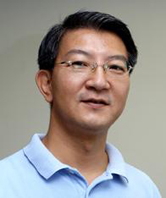 Maximum Yield Amino Acid-Producing Microorganism Developed with use of System Biotechnology
Maximum Yield Amino Acid-Producing Microorganism Developed with use of System Biotechnology
A team led by Sang-Yup Lee, a distinguished professor of Chemical and Biomolecular Engineering and chair professor of LG Chemical, has succeeded in developing maximum yield L-valine-producing microorganism by using System Biotechnology methods. The research results will be published at the April fourth week (April 23 - 27) edition of the Proceedings of the National Academy of Sciences (PNAS) of the USA.
Prof. Lee’s team has developed maximum yield amino acid-producing microorganism (target substance of L-valine, an essential amino-acid) by using microorganism E cell system and simulation methods.
His team produced initial producing microorganism by selectively operating necessary parts in colon bacillus genome and excavated preliminary target gene which is to newly be operated through transcriptome analysis using DNA chips. Then they performed a great amount of gene deletion experiment on computer by using MBEL979, E-cells of colon bacillus, and excavated secondary engineering targets. And they finally succeeded in developing maximum yield valine-producing microorganism that can extract 37.8 grams of valine from 100 grams of glucose by applying experiment results to the actual development of microorganism so as to achieve the optimization of metabolic flux in cells,
Prof. Lee said, “Since successfully used for the development of microorganism on a systematic system level, system biotechnology methods are expected to significantly contribute to the development of all biotechnology-relevant industries. At the beginning, we had huge obstacles in fusing IT and BT, but my team mates cleverly overcame such obstacles, hence I’m very proud of them.” The producing microorganism and its developing methods are pending international applications (PCT).
2007.04.26 View 16636
Maximum Yield Amino Acid-Producing Microorganism Developed with use of System Biotechnology
Maximum Yield Amino Acid-Producing Microorganism Developed with use of System Biotechnology
A team led by Sang-Yup Lee, a distinguished professor of Chemical and Biomolecular Engineering and chair professor of LG Chemical, has succeeded in developing maximum yield L-valine-producing microorganism by using System Biotechnology methods. The research results will be published at the April fourth week (April 23 - 27) edition of the Proceedings of the National Academy of Sciences (PNAS) of the USA.
Prof. Lee’s team has developed maximum yield amino acid-producing microorganism (target substance of L-valine, an essential amino-acid) by using microorganism E cell system and simulation methods.
His team produced initial producing microorganism by selectively operating necessary parts in colon bacillus genome and excavated preliminary target gene which is to newly be operated through transcriptome analysis using DNA chips. Then they performed a great amount of gene deletion experiment on computer by using MBEL979, E-cells of colon bacillus, and excavated secondary engineering targets. And they finally succeeded in developing maximum yield valine-producing microorganism that can extract 37.8 grams of valine from 100 grams of glucose by applying experiment results to the actual development of microorganism so as to achieve the optimization of metabolic flux in cells,
Prof. Lee said, “Since successfully used for the development of microorganism on a systematic system level, system biotechnology methods are expected to significantly contribute to the development of all biotechnology-relevant industries. At the beginning, we had huge obstacles in fusing IT and BT, but my team mates cleverly overcame such obstacles, hence I’m very proud of them.” The producing microorganism and its developing methods are pending international applications (PCT).
2007.04.26 View 16636 -
 KAIST To Hold Robot Competition
KAIST To Hold Robot Competition
KAIST (President Nam-Pyo Suh) will be holding ‘the 6th Intelligent SoC Robotwar 2007’ and is now receiving online applications at the official web site of the competition, www.socrobotwar.org. Application deadline is May 31, Thursday.
‘Intelligent SoC Robotwar’ is a competition of intelligent robots employing System on Chip (SoC) that commenced in 2002.
In the competition, participants will embody their ideas in the same intelligent robot platforms and robot bodies, and how well the ideas are embodied will decide winners.
In the part of tank robot competition (left photo), tank-like robots attack enemy robots by using laser, which demands technologies of scene analysis, radio communication and speech recognition. Hence, a variety of recognition algorithms and motion algorithms significantly affect match results.
Taekwon robot competition is a fight competition of two-leg robots. In the competition, robots equipped with scene analysis technologies perceive the location, distance and motion of enemy robots and do motions of attack and defense with no control by operators.
Teams must be made up of two or more persons including undergraduate or graduate students and all teams are entitled to participate in theoretical and practical education on platform boards for robots and intelligent robots. Final winner will be decided through qualifying test, preliminary matches and main matches.
“The most distinct characteristic of this competition is robot’s intelligence takes top priority. It’s not remote control-operated robots but autonomously operating intelligent robots that will make Korean robot-related industries further profitable. Considering that last year, total 138 teams participated in the competition and an award from the Prime Minister was given to the winner, the competition undoubtedly hold the top position among robot-related competitions,” said Hee-Joon You, President of the competition committee and a professor of Electrical Engineering.
Details on the competition are as follows:1. Purpose● To foster highly specialized technicians in the field of SoC through the embodiment of intellectual robots adopting SoC● To pave foundations for the enhancement of national competitiveness through the vitalization of IT-SoC and intellectual robot fields, next-generation growth momenta
2. Introduction(1) Sponsor: Ministry of Commerce, Industry and Energy(2) Organizer: KAIST(3) Competition parts: SoC tank robot competition, SoC taekwon robot competition(4) Rules of matches① SoC Tank Robot competition- 4M X 4M square field, 2 to 2 survival format- Three three-minute rounds per game (Winning two out of three rounds is required to win a game)- 5-minute long intermission
② SoC Taekwon Robot competition- Octagonal field with a radius of 2 M, 1 to 1 match format- Three three-minute rounds per game (Winning two out of three rounds is required to win a game)- Four downs per round make a loss, In the case of less-than-four-time downs within three minutes, attack points decide winner.- 5-minute long intermission (5) ScheduleApril 1 thru May 31, 2007 ApplicationJuly, 2007 OrientationAugust, 2007 Qualifying test August, 2007 Preliminary matchesOctober18 - 21, 2007 Main matches
(6) ContactWeb site: http://www.socrobotwar.orgPerson in charge: Min-Hee Shin, 042-869-8937, maiwind@kaist.ac.kr
2007.04.26 View 19197
KAIST To Hold Robot Competition
KAIST To Hold Robot Competition
KAIST (President Nam-Pyo Suh) will be holding ‘the 6th Intelligent SoC Robotwar 2007’ and is now receiving online applications at the official web site of the competition, www.socrobotwar.org. Application deadline is May 31, Thursday.
‘Intelligent SoC Robotwar’ is a competition of intelligent robots employing System on Chip (SoC) that commenced in 2002.
In the competition, participants will embody their ideas in the same intelligent robot platforms and robot bodies, and how well the ideas are embodied will decide winners.
In the part of tank robot competition (left photo), tank-like robots attack enemy robots by using laser, which demands technologies of scene analysis, radio communication and speech recognition. Hence, a variety of recognition algorithms and motion algorithms significantly affect match results.
Taekwon robot competition is a fight competition of two-leg robots. In the competition, robots equipped with scene analysis technologies perceive the location, distance and motion of enemy robots and do motions of attack and defense with no control by operators.
Teams must be made up of two or more persons including undergraduate or graduate students and all teams are entitled to participate in theoretical and practical education on platform boards for robots and intelligent robots. Final winner will be decided through qualifying test, preliminary matches and main matches.
“The most distinct characteristic of this competition is robot’s intelligence takes top priority. It’s not remote control-operated robots but autonomously operating intelligent robots that will make Korean robot-related industries further profitable. Considering that last year, total 138 teams participated in the competition and an award from the Prime Minister was given to the winner, the competition undoubtedly hold the top position among robot-related competitions,” said Hee-Joon You, President of the competition committee and a professor of Electrical Engineering.
Details on the competition are as follows:1. Purpose● To foster highly specialized technicians in the field of SoC through the embodiment of intellectual robots adopting SoC● To pave foundations for the enhancement of national competitiveness through the vitalization of IT-SoC and intellectual robot fields, next-generation growth momenta
2. Introduction(1) Sponsor: Ministry of Commerce, Industry and Energy(2) Organizer: KAIST(3) Competition parts: SoC tank robot competition, SoC taekwon robot competition(4) Rules of matches① SoC Tank Robot competition- 4M X 4M square field, 2 to 2 survival format- Three three-minute rounds per game (Winning two out of three rounds is required to win a game)- 5-minute long intermission
② SoC Taekwon Robot competition- Octagonal field with a radius of 2 M, 1 to 1 match format- Three three-minute rounds per game (Winning two out of three rounds is required to win a game)- Four downs per round make a loss, In the case of less-than-four-time downs within three minutes, attack points decide winner.- 5-minute long intermission (5) ScheduleApril 1 thru May 31, 2007 ApplicationJuly, 2007 OrientationAugust, 2007 Qualifying test August, 2007 Preliminary matchesOctober18 - 21, 2007 Main matches
(6) ContactWeb site: http://www.socrobotwar.orgPerson in charge: Min-Hee Shin, 042-869-8937, maiwind@kaist.ac.kr
2007.04.26 View 19197 -
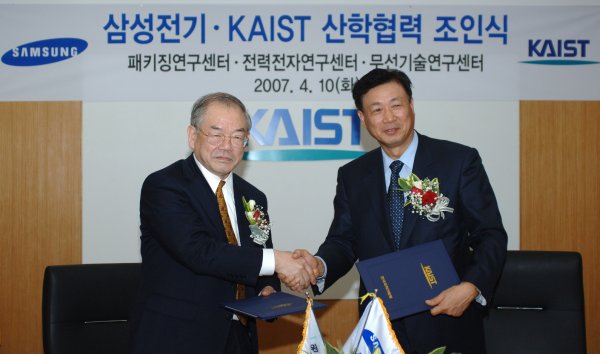 KAIST and Samsung Electrics Signs Cooperation Agreement
- Industry-Academy cooperation program for enhancing global competitiveness and for obtaining new growth momentum
- Two research institutes - Power Electronics Institute and Packaging Institute - open in KAIST- Fostering customized experts through researcher reeducation, field experiences, etc.
KAIST (President Nam-Pyo Suh) and Samsung Electronics (President Ho-Moon Kang) will be promoting industry-academy cooperative activities to enhance their global competitiveness and to obtain new growth momentum.
The both parties singed the agreement at KAIST conference room 1 on April 10, Tuesday, and two new research institutes - Power Electronics Institute (PEI) and Packaging Institute (PI) -opened this day. As a result, KAIST holds three research institutes managed in cooperation with Samsung Electronics, including the Radio Technology Institute (RTI) which was opened in 2005.
The PEI aims to develop power supply devices for high-efficiency and high-power servers of flat display power supply, and will foster customized experts through researcher reeducation and field experiences.
The PI will foster experts for improving packaging qualities and for developing next-generation technologies. Packing technologies are in the core field of electronics part industries which is going for integrating, systemizing and modulization.
“I’m sure outstanding industry-academy researches and student education will raise the standings of the both bodies, and I promise generous support to produce further significant research results,” said KAIST President Suh.
“This cooperation program will become an example of successful industry-academy cooperation. I’m expecting KAIST will become a trustworthy partner for Samsung Electronics to jump into one of the world’s top-class enterprises,” said Samsung Electronics President Kang.
2007.04.23 View 15229
KAIST and Samsung Electrics Signs Cooperation Agreement
- Industry-Academy cooperation program for enhancing global competitiveness and for obtaining new growth momentum
- Two research institutes - Power Electronics Institute and Packaging Institute - open in KAIST- Fostering customized experts through researcher reeducation, field experiences, etc.
KAIST (President Nam-Pyo Suh) and Samsung Electronics (President Ho-Moon Kang) will be promoting industry-academy cooperative activities to enhance their global competitiveness and to obtain new growth momentum.
The both parties singed the agreement at KAIST conference room 1 on April 10, Tuesday, and two new research institutes - Power Electronics Institute (PEI) and Packaging Institute (PI) -opened this day. As a result, KAIST holds three research institutes managed in cooperation with Samsung Electronics, including the Radio Technology Institute (RTI) which was opened in 2005.
The PEI aims to develop power supply devices for high-efficiency and high-power servers of flat display power supply, and will foster customized experts through researcher reeducation and field experiences.
The PI will foster experts for improving packaging qualities and for developing next-generation technologies. Packing technologies are in the core field of electronics part industries which is going for integrating, systemizing and modulization.
“I’m sure outstanding industry-academy researches and student education will raise the standings of the both bodies, and I promise generous support to produce further significant research results,” said KAIST President Suh.
“This cooperation program will become an example of successful industry-academy cooperation. I’m expecting KAIST will become a trustworthy partner for Samsung Electronics to jump into one of the world’s top-class enterprises,” said Samsung Electronics President Kang.
2007.04.23 View 15229 -
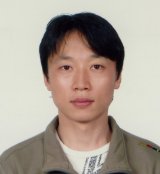 A doctorate of Mechanical Engineering Named Recipient of Best Student Paper Award at International Society
Seung-Min Ryu, a doctorate of Mechanical Engineering under the supervision of Professor Dong-Yul Yang, has been named as a recipient of the best student paper award of the Society for Information Display (SID).
The title of the paper is ‘the study on the fabrication of super-high resolution cathode separators by X-ray lithography processes’. He proposed at this paper the fabrication of 12 micron-thick cathode separators, which can fabricate further delicate separators than the current 50 micron-thick commercial PDP separators, thereby significantly improving the resolution of PDPs in the future.
Ryu will make an oral presentation on this paper and win the award at the SID conference, which will take place in the U.S. for six days from May 20.
2007.04.23 View 17446
A doctorate of Mechanical Engineering Named Recipient of Best Student Paper Award at International Society
Seung-Min Ryu, a doctorate of Mechanical Engineering under the supervision of Professor Dong-Yul Yang, has been named as a recipient of the best student paper award of the Society for Information Display (SID).
The title of the paper is ‘the study on the fabrication of super-high resolution cathode separators by X-ray lithography processes’. He proposed at this paper the fabrication of 12 micron-thick cathode separators, which can fabricate further delicate separators than the current 50 micron-thick commercial PDP separators, thereby significantly improving the resolution of PDPs in the future.
Ryu will make an oral presentation on this paper and win the award at the SID conference, which will take place in the U.S. for six days from May 20.
2007.04.23 View 17446 -
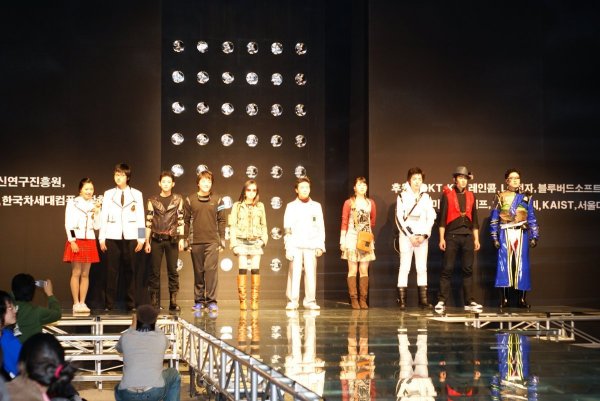 3rd Ubiquitous Fashionable Computer Contest
KAIST will be receiving until May 31, Thursday, applications for ‘the 3rd Ubiquitous Fashionable Computer (UFC)’ Contest, which will take place under the title of ‘Enjoy U-life with UFC’.
The contest has begun in 2005 by KAIST and the Korean Society for Next-Generation Computing to raise people’s concern over next-generation computing and to prepare for the upcoming ubiquitous era.
‘UFC’ refers to a wearable computer small and light enough to be worn on human bodies or clothes so that users can use computers with no restriction while moving. This terminology was created by Korea.
The contest includes designated items division and free items division, and not only university students but also general public can participate in the free items division. Teams qualified for the final contest in the designated items division will be offered wearable computer platform and 1.5 million won of production cost. The final contest will take place at the UFC fashion show stage ‘Next-Generation Computing Exhibition’ at KOEX in November.
Hee-Joon You, Co-president of the Contest Committee and a professor of Electrical Engineering, stressed on the future life made joyful by IT technologies by saying, “Considering the title of the contest, we’ve selected ‘games enjoyed with UFCs’ as a mission of the designated items division to combine games, rising software, and wearing computers, hardware.”
UFC is a brand-new field that fuses IT technologies and fashion, seeking the improvement of computer technologies and fashion creation. UFC, a further advanced wearable computer than existing ones, is an important advanced field that leads computer industries in the ubiquitous era.
2007.04.23 View 17120
3rd Ubiquitous Fashionable Computer Contest
KAIST will be receiving until May 31, Thursday, applications for ‘the 3rd Ubiquitous Fashionable Computer (UFC)’ Contest, which will take place under the title of ‘Enjoy U-life with UFC’.
The contest has begun in 2005 by KAIST and the Korean Society for Next-Generation Computing to raise people’s concern over next-generation computing and to prepare for the upcoming ubiquitous era.
‘UFC’ refers to a wearable computer small and light enough to be worn on human bodies or clothes so that users can use computers with no restriction while moving. This terminology was created by Korea.
The contest includes designated items division and free items division, and not only university students but also general public can participate in the free items division. Teams qualified for the final contest in the designated items division will be offered wearable computer platform and 1.5 million won of production cost. The final contest will take place at the UFC fashion show stage ‘Next-Generation Computing Exhibition’ at KOEX in November.
Hee-Joon You, Co-president of the Contest Committee and a professor of Electrical Engineering, stressed on the future life made joyful by IT technologies by saying, “Considering the title of the contest, we’ve selected ‘games enjoyed with UFCs’ as a mission of the designated items division to combine games, rising software, and wearing computers, hardware.”
UFC is a brand-new field that fuses IT technologies and fashion, seeking the improvement of computer technologies and fashion creation. UFC, a further advanced wearable computer than existing ones, is an important advanced field that leads computer industries in the ubiquitous era.
2007.04.23 View 17120